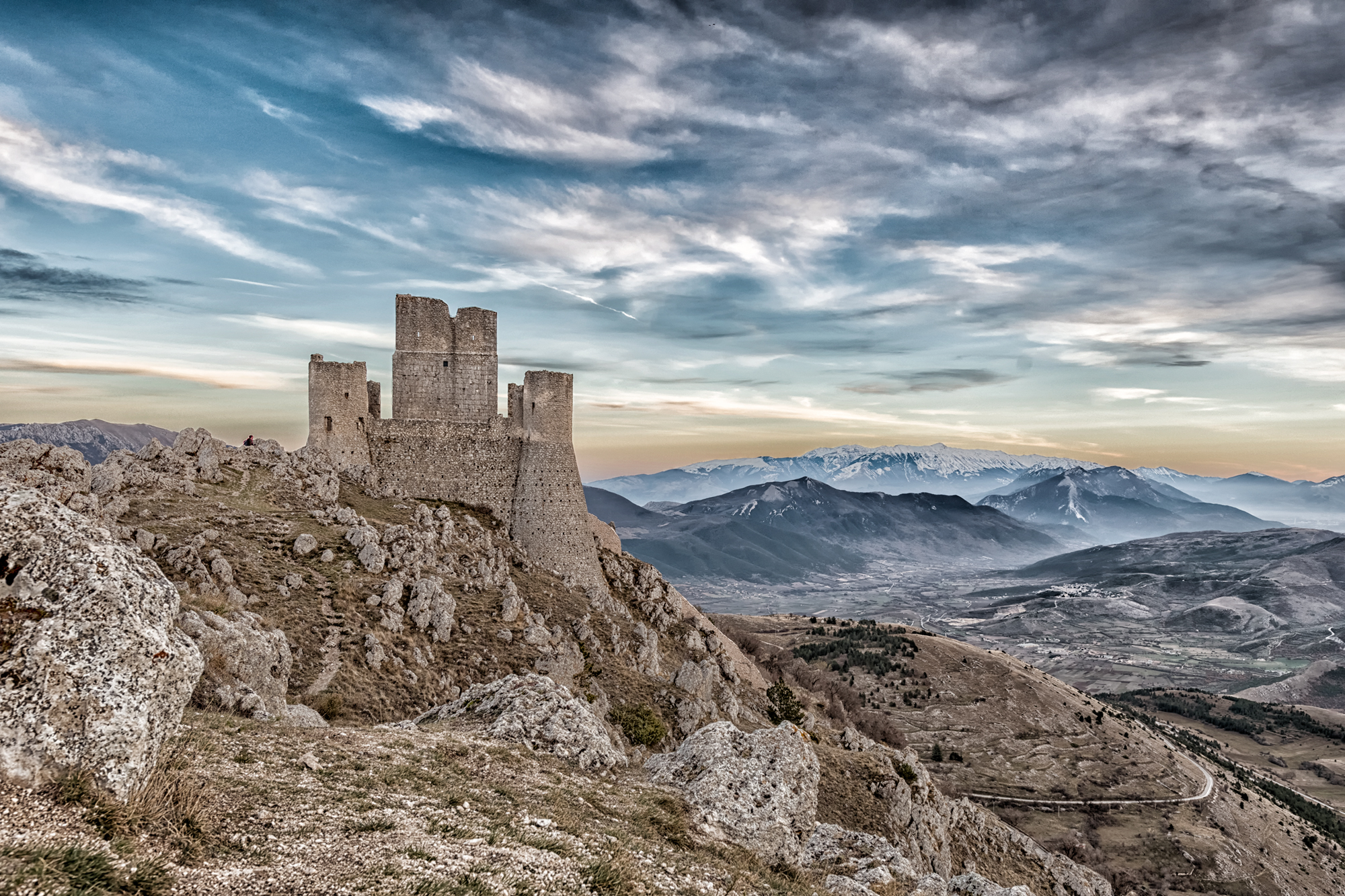Pìzzoli (Pìzzuli in L’Aquila dialect) is an Italian town in the province of L’Aquila in Abruzzo (Italy). Today 50% of the municipal territory is part of the Gran Sasso e Monti della Laga National Park. Located at an altitude of 740 m above sea level, in the valley of the river Aterno whose springs are located on its territory, has 4,074 residents, but has a current population, including residents and students, over 7,000 inhabitants (Istat 2012), presenting itself as the most populous municipality of the upper Aterno and the second (after the capital L’Aquila) of the entire basin of L’Aquila.
The town consists of five residential complexes:
Pizzoli (Rajolu in the local tradition), Marruci, San Lorenzo, Cermone and Cavallari. These last two, after the recent urban development, are the only ones to be detached from the rest of the agglomeration.
Its origins are ancient. To testify to this there are many finds including a recent burial monument with a circular plan, of the type “a tumulus”, dry stone, with a diameter of about six meters (framed in the first Iron Age and the Orientalizing Age – first half of the 8th century BC) found in Scentelle, near the cemetery. There was buried a girl, adolescent or young, certainly from a family of notables, perhaps princes.
In her funeral trousseau there was an authentic jewel of extraordinary beauty: the Fibula di Pizzoli (bronze – 8th century BC). – today in the National Archaeological Museum of Abruzzo of Villa Frigerj in Chieti – Fibula is the Latin name of the buckle or brooch, used to secure the clothes on the shoulders and waist).
It has always been considered a border land. First as a land of migrations of the Picene populations, then in pre-Roman times it became a border land between the Sabines and the Vestini; it followed the fate of the city of Amiternum identified in Augustan times as IV Regio “Sabina e Sannio” (in fact it rises near the remains of the ancient Sabine city and was probably a suburb of it). After the Roman decadence, on the territory were distributed many villas that for all the high Middle Ages suffered a progressive abandonment. In this period it was part of the patrimony of the Abbey of Farfa and of the dioceses first Amiternina and then Rieti.
In the sixth century, in the locality of San Lorenzo, around the personality of Sant’Equizio, whose remains today are kept in the local abbey, a premonastic community was born and consolidated in the inhabited nucleus despite the Saracen raids and the Longobard domination.
In the Middle Ages followed the fate of the other districts and participated in the founding of the city of L’Aquila (Pizzolum habet focus 177) and in particular the district of San Pietro by building the Church of San Lorenzo.
In 1575 the territory was purchased by Ferrante de Torres, whose descendants kept it until feudalism was abolished in 1809. The de Torres family built the beautiful palace that overlooks the town and that still today, carefully restored, you can admire.
In 1703 its territory was the epicenter of a very strong earthquake: the building patrimony was almost completely razed to the ground (also because it was made up of poor and small buildings), many of its inhabitants perished there and three big cracks in the ground opened.
Because of its proximity to the city of L’Aquila, the French in the nineteenth century and the Germans in the last war established their command of the area in the castle De Torres.
Even during the Fascist period it was considered border territory: from June 1940 until October 1943, Leo Ginzburg was sent here, together with his wife Natalia Levi Ginzburg and their children, Carlo, Andrea and Alessandra, condemned by the Special Court for anti-fascism. Leone in “Lettere dal confine” and Natalia in “Inverno in Abruzzo” remember their life in the village: “monotonous, sometimes hated, sometimes loved”. They remember the workshop of Girò, Leone’s conversations with the young Vittorio Giorgi (later partisan, trade unionist, mayor of Pizzoli for more than twenty years and deputy for several legislatures) and Attilio the blacksmith. The municipal library is dedicated to the Ginsburg family.
On April 6, 2009, together with the entire territory of L’Aquila, suffered a tremendous earthquake tremor that, fortunately, did not generate any particular victims and damage.
The Pizzolana cuisine is the triumph of naturalness and good taste rooted in the rural and pastoral origins of the mountain people. From them has inherited a wide variety of cheeses, such as caciotte, giuncate and the famous “pecorino di Pizzoli“. The tasty lamb and mutton meats from which the famous “arrosticini“, one of the economic sources of the area, are made. The pleasure for cold cuts, such as ham, loin, coppa, meat sausages and even rarer “salsicce di fegato“. Finally for the tasty legumes, such as lentils, beans, chickpeas and “cicerchie“. Very tasty because they are cultivated only in arid lands. Ancient food of the shepherds is the “Pecora alla cottora”; cooked sheep meat with various odors and aromatic herbs that give it a unique flavor.

